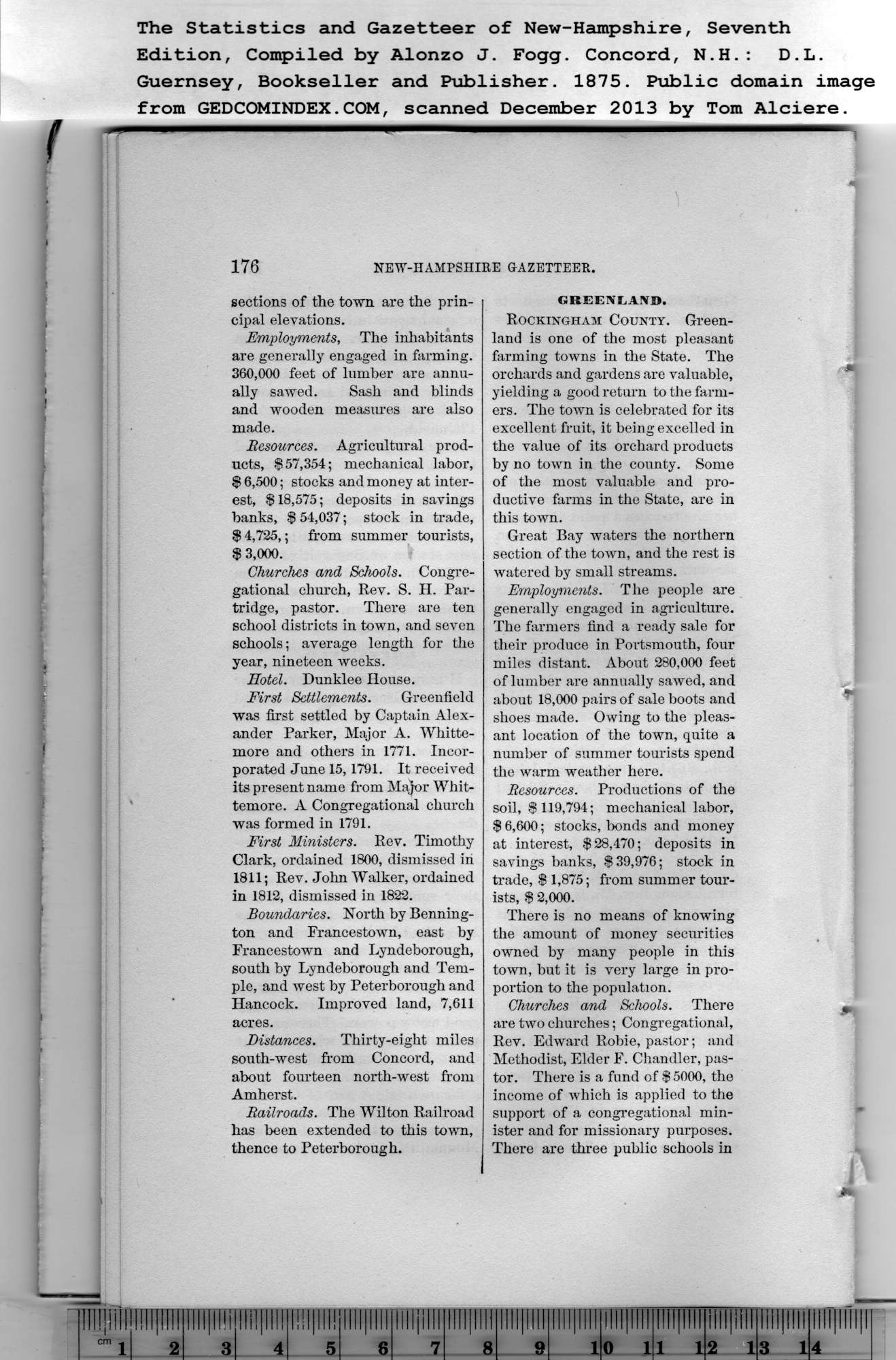|
sections of the town are the prin-
cipal elevations.
Employments, The inhabitants
are generally engaged in farming.
360,000 feet of lumber are annu-
ally sawed. Sash and blinds
and wooden measures are also
made.
Resources. Agricultural prod-
ucts, $57,354; mechanical labor,
$ 6,500; stocks and money at inter-
est, $18,575; deposits in savings
banks, $ 54,037; stock in trade,
$ 4,725,; from summer tourists,
$3,000.
Churches and Schools. Congre-
gational church, Rev. S. H. Par-
tridge, pastor. There are ten
school districts in town, and seven
schools; average length for the
year, nineteen weeks.
Hotel. Dunklee House.
First Settlements. Greenfield
was first settled by Captain Alex-
ander Parker, Major A. Whitte-
more and others in 1771. Incor-
porated June 15, 1791. It received
its present name from Major Wliit-
temore. A Congregational church
was formed in 1791.
First Ministers. Rev. Timothy
Clark, ordained 1800, dismissed in
1811; Rev. John Walker, ordained
in 1812, dismissed in 1822.
Boundaries. North by Benning-
ton and Francestown, east by
Francestown and Lyndeborough,
south by Lyndeborough and Tem-
ple, and west by Peterborough and
Hancock. Improved land, 7,611
acres.
Distances. Thirty-eight miles
south-west from Concord, and
about fourteen north-west from
Amherst.
Railroads. The Wilton Railroad
has been extended to this town,
thence to Peterborough. |
GREENLAND.
Rockingham County. Green-
land is one of the most pleasant
farming towns in the State. The
orchards and gardens are valuable,
yielding a good return to the farm-
ers. The town is celebrated for its
excellent fruit, it being excelled in
the value of its orchard products
by no town in the county. Some
of the most valuable and pro-
ductive farms in the State, are in
this town.
Great Bay waters the northern
section of the town, and the rest is
watered by small streams.
Employments. The people are
generally engaged in agriculture.
The farmers find a ready sale for
their produce in Portsmouth, four
miles distant. About 280,000 feet
of lumber are annually sawed, and
about 18,000 pairs of sale boots and
shoes made. Owing to the pleas-
ant location of the town, quite a
number of summer tourists spend
the warm weather here.
Resources. Productions of the
soil, $119,794; mechanical labor,
$ 6,600; stocks, bonds and money
at interest, $28,470; deposits in
savings banks, $39,976; stock in
trade, $ 1,875; from summer tour-
ists, $ 2,000.
There is no means of knowing
the amount of money securities
owned by many people in this
town, but it is very large in pro-
portion to the population.
Churches and Schools. There
are two churches; Congregational,
Rev. Edward Robie, pastor; and
Methodist, Elder F. Chandler, pas-
tor. There is a fund of $ 5000, the
income of which is applied to the
support of a congregational min-
ister and for missionary purposes.
There are three public schools in |
